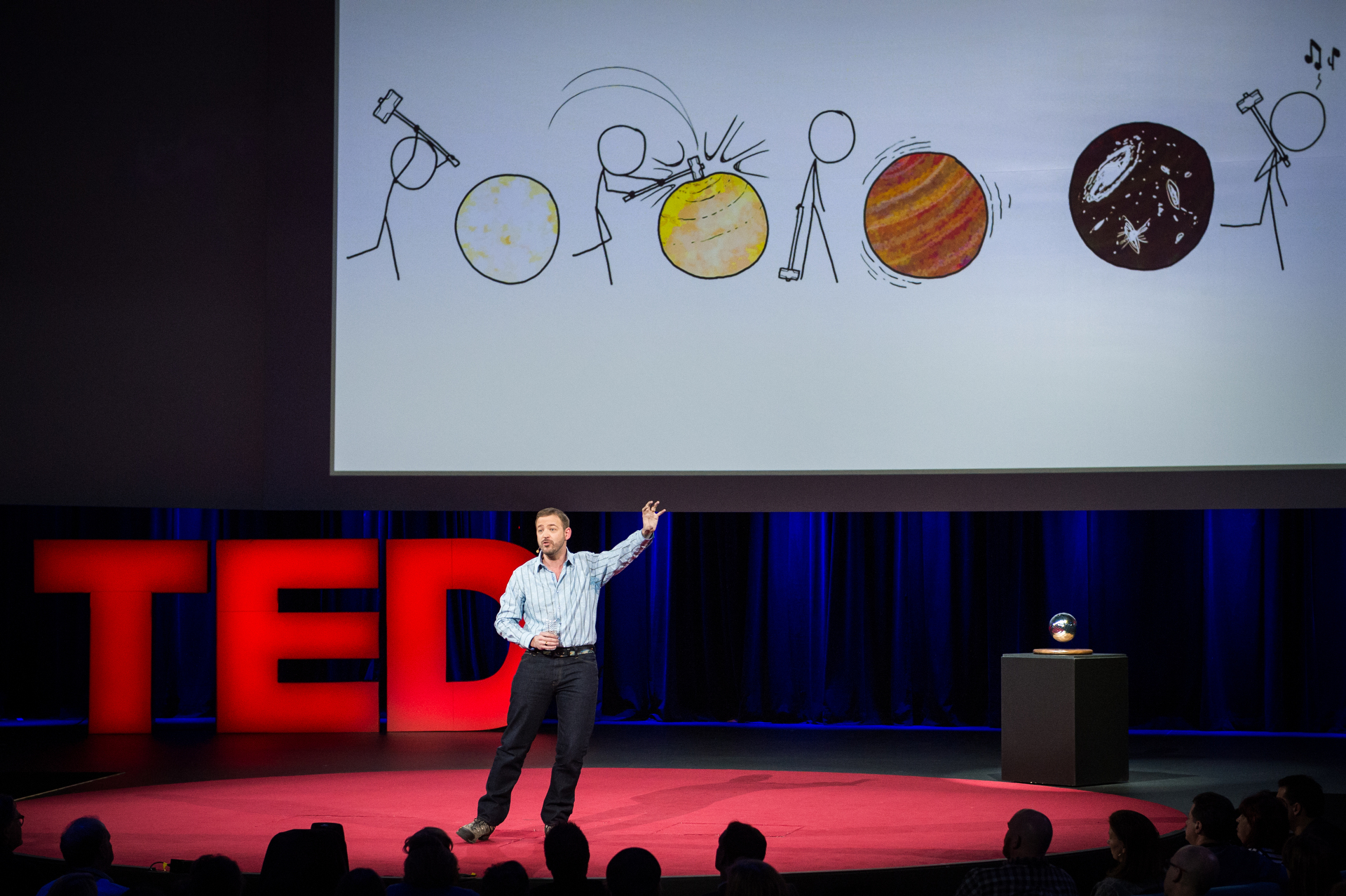In a surprise talk tonight, Allan Adams took the stage to explain a remarkable discovery announced just yesterday. And since he’s here and is amazing, Randall Munroe of xkcd illustrated the talk.
As Adams tells us, if you look into the night sky, you see stars … and if you look further, you see more stars. Further, galaxies. Further, nothing.
And if you look even further, “Finally you see a faint afterglow. The afterglow of the Big Bang.” This is the Cosmic Microwave Background. Since its beginning, it’s had a long time to cool down, 13.7 billion years, so it’s only 2.7 degrees Kelvin. But we’ve mapped it, and the shocking thing is that it’s almost completely uniform, it’s almost the same in any direction. But there are small differences, only 10 parts in a million. And that’s important because, Adams says, “Where it was a little hotter, there was a little more stuff, and where there’s more stuff, we have galaxies and clusters of galaxies.”
Now that’s cool. “But what they found on Monday is cooler.”
Imagine you strike a bell. It rings, and then it fades and fades and fades. The early universe was like that, but the bell was the fabric of spacetime, and the hammer was quantum mechanics. Early on, gravitational waves put a slight twist on the afterglow, and the collaborators on the experiment BICEP2 put in three years at the South Pole looking for this ringing. And they found it.
But it gets even better. The new observation provides the first clear support for the theory of inflation, the idea that in the early universe, a tiny pocket expanded at a tremendous rate, becoming the universe we see. “The reason this is so exciting” says Adams, “is that it tells us we are one large bubble surrounded by something else. It’s a theory that’s been around for a while. We never thought we’d see killer evidence, and this is killer evidence.”
Read more: A detailed explanation from TED Fellow Renee Hlozek >>
Also watch: One of the scientists who predicted this, at the moment he hears the news >>

Comments